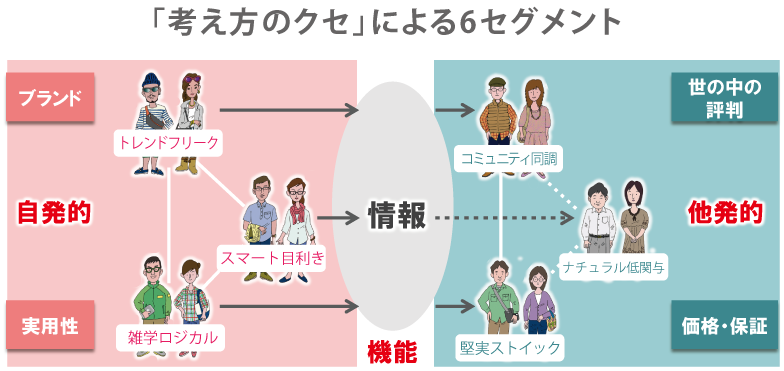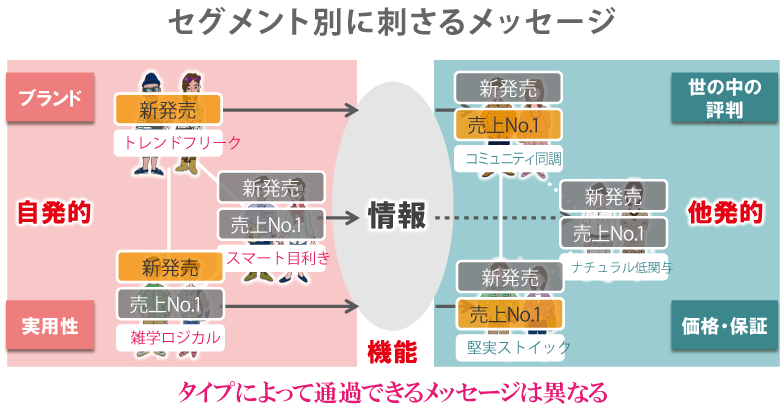Solving Marketing Challenges with "Thinking Habits"!?
When planning marketing activities, do you often hit walls or face seemingly insurmountable problems? Speaking with professionals active on the front lines of marketing, I discovered that many "marketing dilemmas" can be solved by applying the "thinking habits" introduced in Parts1 and 2.
In this final installment, we'll use a Q&A format to show how actual concerns shared by marketers can be resolved by applying these "thinking habits."
Q&A: Your Concerns
Q1. We manage customers using membership cards. Analysis shows that even a single customer might be an Innovator when buying beer but a Follower when buying cosmetics. Trying to segment by demographics gets too complex, so we end up just differentiating by purchase amount for direct mail and emails. I really want to be more granular.
A1. "Thinking patterns" are fundamental to human nature. An individual's segment remains consistent regardless of category. For someone with a "Trivia-Logical" pattern, both beer and cosmetic purchases stem from that "thinking pattern." Therefore, creating emails and direct mails tailored to specific "thinking patterns" enables more nuanced communication.
Q2. When creating product concepts, we always set segments like "Moms who give their all to both home and work! Everyone's ideal mom." But when it comes to media selection, we end up choosing media for "women in their 30s." Does that mean we're ultimately stuck evaluating based on demographics (gender/age)?
A2. "Thinking Habits" is linked with Video Research Ltd.'s "ACR/ex," which conducts comprehensive surveys from media exposure to values. This allows us to understand what TV programs each segment watches and what magazines they buy. Therefore, if the segment decided at the concept stage is "Trivia-Logical" women, we can select media specifically targeting "Trivia-Logical" women.
Q3. When crafting ad messages, we tend to go straight for appeals like "Number One in Sales," but I'm worried if that really resonates with everyone.
A3. The "way of thinking" determines what kind of message resonates. While "Number One in Sales" resonates with the two "other-directed" segments (Community Conformist and Stoic Pragmatist), it feels "overused" and fails to resonate with the "self-directed" segment seeking novelty. Therefore, it's crucial to combine the right "message" and "media" tailored to each segment.
Q4. Our product targets men in their 40s. We've been marketing to them for 4-5 years, but recently, the results have been weakening. Should we change our target?
A4. Lately, due to diversifying life stages, values, and advancing digitalization, it's becoming harder to categorize consumers simply by gender and age. Instead of trying to change the target, why not analyze men in their 40s based on their "thinking patterns" and approach them accordingly? By considering consumers' "thinking patterns," you can create sincere communication that might yield unprecedented results.
Over three installments, I've shared the essence of my book , "Break Through the Mind Hole." How did you find it? I hope utilizing "thinking patterns" can help you solve your marketing and communication challenges, even if just a little.
At the "Human Research Institute," we will continue our research on "consumers." Please keep an eye on our activities. We also share consumer-related information, including activity updates and columns, on the "Human Research Institute" platform. We'd be delighted if you'd take a look.




